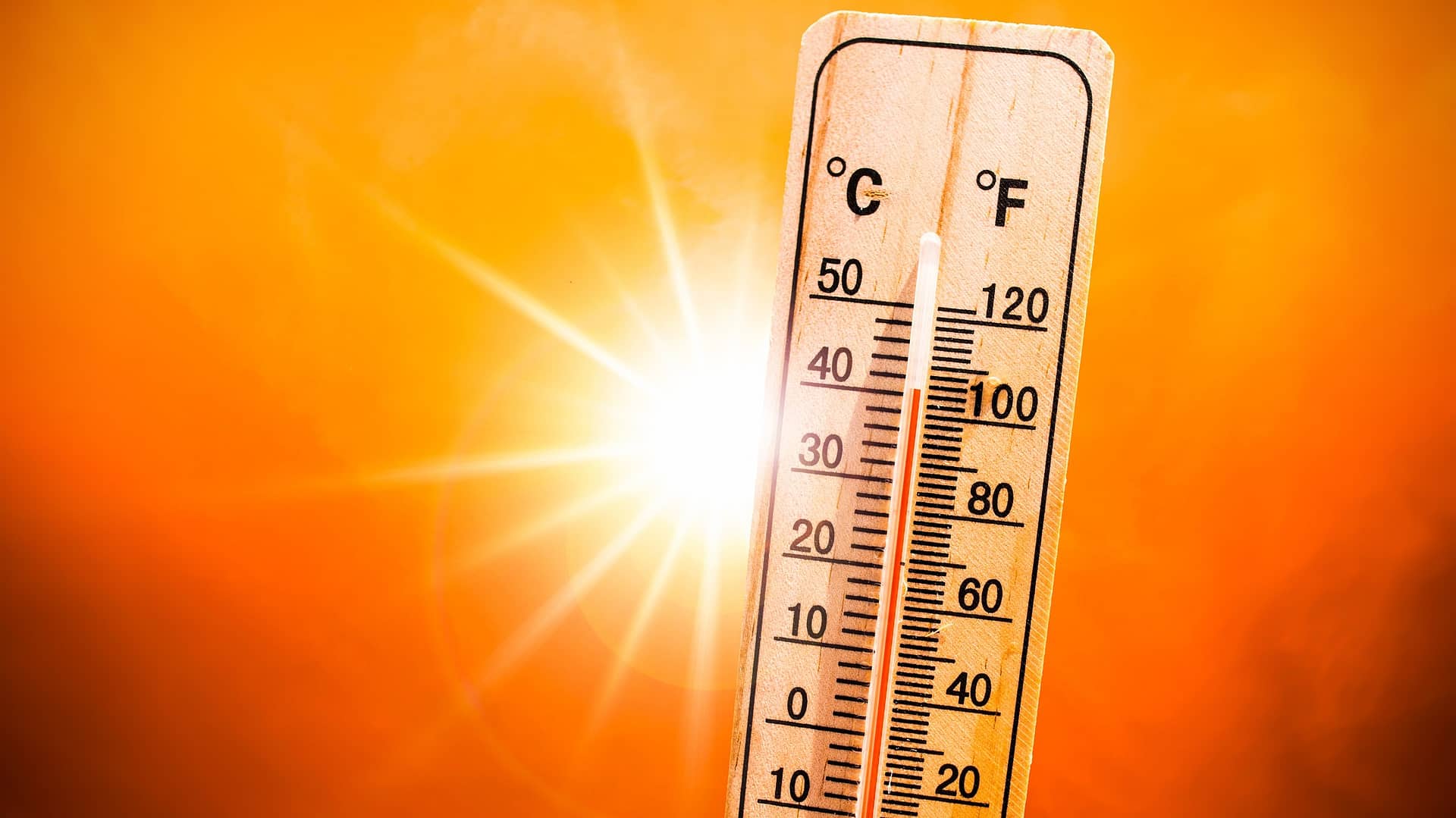
The hottest months in the Caribbean are June to October.
With global warming, these months are becoming discernibly hotter than in past years.
Inextricably associated with the blistering heat and stifling humidity is a spectrum of heat-related illnesses.
Some indisputable facts:
●Heat has killed more locals than natural disasters in Australia, Arizona, Kuwait, Iran, Ecuador, and other places.
●Heat-related deaths worldwide are up by 56% since 2018.
●Heat stroke kills 80+% of its victims.
●Heat-related illnesses are preventable.
●While certain groups are more vulnerable to extreme heat, however, no one is immune.
How Heat Kills
If the ambient temperature is very high it becomes difficult for the body’s natural cooling mechanisms (e.g. sweating) to cool the body. This can result in the body overheating, leading to:
●A reduction in tissue oxygen
●Cytotoxicity within the cells
●Inflamed tissues
●Clotting in the blood vessels throughout the body
●Breakdown of muscle cells (rhabdomyolysis)
The aforementioned are most likely to impact the following organs:
●Brain
●Heart
●Intestines
●Kidneys
●Liver
●Lungs
●Pancreas
Those most vulnerable to heat-related illnesses include:
●Older than 65
●Younger than 4
●Pregnant/ breastfeeding
●Overweight
●Persons with major illnesses (e.g. heart disease, kidney disease, diabetes)
●Socioeconomically disadvantaged (poor, clustered housing, suboptimal diets)
●Performing heavy labour outdoors
●Certain medications (e.g. diuretics, benzodiazepines, laxatives, neuroleptics, L.thyroxine)
Other Factors that Contribute to Heat-related Illnesses
●Dehydration – Secondary to strenuous exercise, diarrhoea/ vomiting, excess alcohol consumption, medications, suboptimal intake of water
●Poor ventilation/ airflow
●Protracted sun exposure between 10:00 a.m and 3:00 p.m
●Events with large crowds
●Drugs e.g. ecstasy and speed
Types of heat-related illnesses and associated symptoms
●Heat rash: Itchy/ prickly rash covering a large area. Looks like a fine rash, pimples, or small water blisters. Mostly neck, trunk, groin, and elbow creases.
●Heat cramps/ spasms: Can affect any muscle group, mostly reported in the abdomen, and upper and lower limbs.
●Heat syncope (fainting): May initially experience dizziness and light headedness before collapsing into an unconscious state.
●Heat exhaustion – Range of symptoms includes profuse sweating, muscle cramps, extreme weakness, nausea/ vomiting, light headedness, headaches, elevated body temperature, increased weak pulse, rapid shallow breathing, and clammy skin.
●Heatstroke: There is no sweating, mentally disoriented, light headedness, headaches, shallow and rapid breathing, hot and dry skin, convulsions, unconsciousness, and markedly elevated body temperature.
Tips to prevent heat-related illness
●Drink lots of fluids, especially on hot days. Preferably water. Avoid drinks that can dehydrate such as alcohol, coffee, tea, and other caffeinated beverages.
●Minimize exposure to heat. Stay indoors or in the shade.
●When outdoors protect yourself – cover exposed skin with light-coloured cotton wear, keep your head covered with broad-brimmed hats, and gravitate to shaded areas. Use heat-reflective umbrellas, especially for the elderly or young children outdoors.
●Outdoor exercise and activities should be scheduled to avoid the hotter times of the day between 10:00 a.m and 3:00 p.m.
●Educate your children on how important it is to consume lots of fluids.
●Never leave children or older folks in cars, unless it’s for a very short period of time and the windows must be rolled down (please consider safety).
●Take showers often
●Opt for cool drinks vs hot
●Check-in on elderly friends/ relatives often
●Learn basic first aid
●Consider placing awnings over windows that are struck by the morning and afternoon sun.
●Aim for an indoor temperature of 32C or less. Fans help, however, if the temperature is above 35C they are not very effective.
●Consider installing an air-conditioning unit if possible.
●Hanging indoor towels soaked in cool water helps to reduce the temperature of a room.
Governments should consider legislating heat-mitigating building codes regarding all new buildings:
• Installing ceilings
• Placement of small air holes above ceilings to allow hot air to escape
• Placement of doors and windows to allow maximum ventilation
• Other
Remove import duties from solar-powered AC units, reflective (rooftop) paints, and awnings.
Painting rooftops of all government buildings, especially schools, with sun-reflective paint
Seek immediate medical help if:
●There is fainting, agitation, confusion
●Unable to consume fluids
●Not sweating
●Dry or clammy skin
●Temperature 102.2F or 39C or higher
●Fast or weak pulse
●Nausea/ vomiting
●Diarrhoea
●Severe muscle cramps or spasms
●Dark or very concentrated urine
CLICK HERE TO JOIN OUR WHATSAPP GROUP
CLICK HERE TO JOIN OUR WHATSAPP GROUP
CLICK HERE TO JOIN OUR WHATSAPP GROUP
CLICK HERE TO JOIN OUR WHATSAPP GROUP
Advertise with the mоѕt vіѕіtеd nеwѕ ѕіtе іn Antigua!
We offer fully customizable and flexible digital marketing packages.
Contact us at [email protected]













Please don’t believe their hype of Global Warming/Climate Change/Global Boiling.
It’s all meant to scare us in to accepting their plundering of our personal wealth, transfered to their off shore accounts.
Case in point – but it’s the second comment (post) to follow, that will reveal their Global Deception.
They claim to have gotten the historical data from the ‘country’s National Meteorological Service’. But they never provide links to such historical data, 117 years ago, or 1906.
The story states: “On Tuesday, August 1, 2023, in the town of Rivadavia, the thermometer hit 37.2 degrees Celsius”.
https://www.nbcnews.com/news/latino/winter-argentina-hottest-august-117-years-records-rcna97711
But according to easily retrievable weather data from Rivadavia, yesterday, August 1, 2023 – it shows the temperature at 12:00 PM local time to be 13°C and, going to 11°C by 6:00 PM.
https://www.timeanddate.com/weather/argentina/comodoro-rivadavia/historic
By the same metrics used to determine “climate change” it was found that 1300 years ago it was over 2 degrees warmer than now, but that data was conveniently deleted off the internet.
That temperature riser must have been due to all the cars and coal fired power plants in the Dark Ages.
That’s right.
And even the most recent Greenland ice core samples show, that Greenland today, is colder, than at the early part of the current geological epoch, or Holocene, and that’s almost 11,000 years ago.
Speaking about deleting historical weather data; did you know that CANADA recently deleted 100 years of the country’s past weather data?
That’s why Sophie left Justin. Just kidding!
ENVIRONMENT CANADA scrapped all observed weather data from 1850 to 1949 – claiming that there weren’t enough weather stations to create a reliable data set for that 100-year period, so they created their own computer models.
Full story here: https://torontosun.com/opinion/columnists/goldstein-feds-scrapped-100-years-of-data-on-climate-change
Oh, and I’m so very glad to hear from this article that extreme cold doesn’t kill.
Gee, rather biased story methinks.
Exactly.
FEAR MONGERING
FEAR MONGERING
FEAR MONGERING
Makes giving them your personal wealth, or them taking it, seem justified.
HELL will be much hotter 🔥 🔥 🔥
Its a global money grab scam to erode freedoms and enrich the elite.
The heat we should be worried about is the one from the acid foods that we consume everyday that is cooking us from within…and not the heat from our irradiator.
“The earth is the Lord’s and the fullness there of”.
Only God alone who will determine when the end of this earth is upon us. Man and their baseless claims have no clue as to when that is.
Pure nonsense. The Sun has been scorching hot since I’ve been alive, especially for us black people who grew up toiling in it just so we can eat.
That’s why the Bible said ” by the sweat of the brow man shall eat bread”. The Sun 🌞 has always been hot, duh!
Oh please 🥺🥺🥺
Finally someone who understand’s whats going on in the caribbean these days
Heat waves recorded a century ago were more problematic than anything we’re seeing today.
Government researchers have been tracking heat waves for more than 100 years.
The annual heat wave index for the contiguous 48 states was substantially higher in the 1930s than at any point in recent years.
NOAA used 1,066 weather stations located across the United States to collect this data.
If the available data so clearly reveals no heat-wave crisis, why are media outlets suggesting the opposite is true?
The answer is sloppy, irresponsible media reporting, combined with cherry-picked data.
https://climatechangedispatch.com/dont-blame-climate-change-for-summer-heat-waves-heres-why/
Comments are closed.